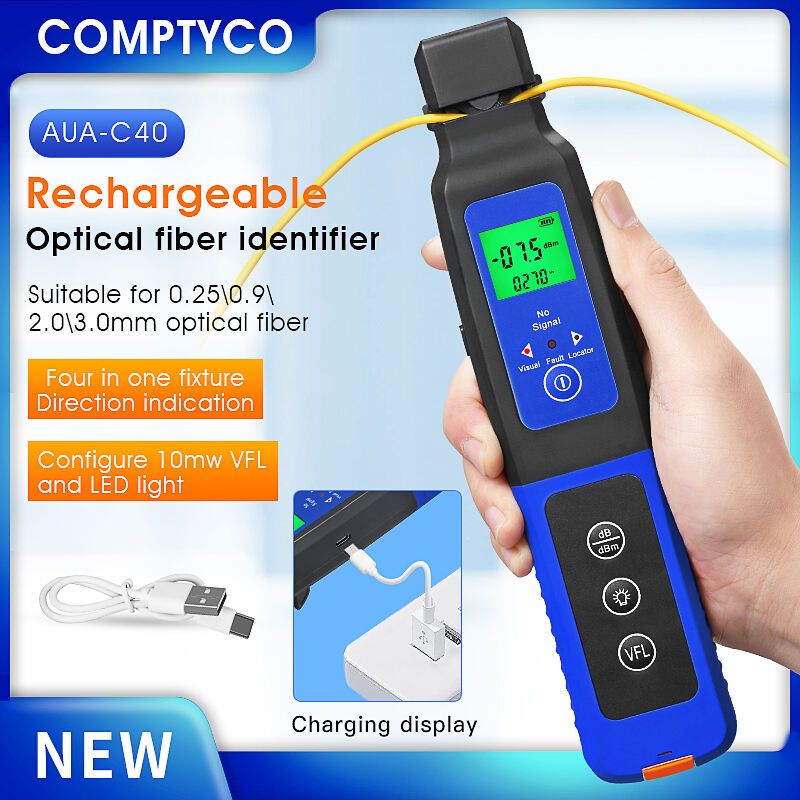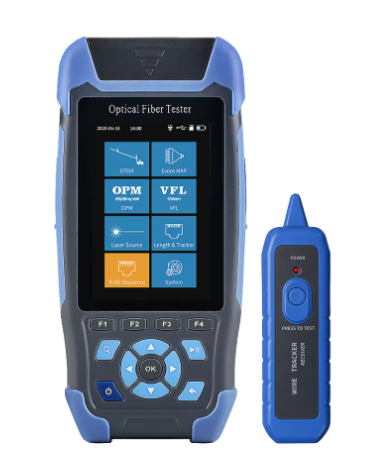Understanding Fiber Optic Connector Contamination Risks
How Contaminants Affect Signal Transmission
Dirt on fiber optic connectors can really mess up signal quality and cause serious transmission issues. The telecom sector has seen research showing that stuff like dust particles and oil residue can actually cut down signals by as much as 90% in some cases. These optical fibers work by sending light through them, so anything blocking that path causes major signal weakening which disrupts data moving through the network. When trying to get the best possible performance from fiber systems, it matters a lot to know exactly how tiny bits of dust, smudges from fingers, and various oils interfere with the way light travels inside those cables. Something interesting happens too the effect these contaminants have changes based on what wavelength of light is going through the fiber. Because of this variation, technicians need to think carefully about different cleaning approaches depending on the specific application, making sure there's not too much interference and keeping the signal clear enough for proper operation.
Common Sources of Fiber End Face Contamination
Knowing where fiber end face contamination comes from matters a lot if we want our fiber optic systems to work well over time. Dust from the surroundings, residue left behind when people handle equipment, and bad storage habits are all big problems that get dirt onto those connectors. And let's not forget about human mistakes too many folks grab connectors without thinking or touch the actual ends, which just wears them down faster and gets stuff stuck there. Good training really helps cut down on these kinds of errors so anyone working with fiber optics knows how to handle things properly. Keeping everything nice and clean while installing new systems or doing routine checks makes a huge difference in preventing contamination issues. When teams stick to solid cleaning routines regularly, they see better results from their fiber optic setups, fewer signal drops, and less risk of complete system failures down the road.
What Constitutes Over-Cleaning?
Frequency vs. Necessity: Striking the Balance
Getting the cleaning schedule right for fiber optic connectors matters a lot because overdoing it can actually cause problems. Many people think more cleaning equals better performance, but too much friction from repeated cleanings might end up damaging these delicate components instead. Industry guidelines generally point toward finding that sweet spot between too little and too much maintenance. Research indicates that keeping things clean enough for good signal transmission while protecting connector integrity isn't just about regular cleaning sessions. Technicians should actually check if there's real contamination present first rather than following some arbitrary schedule. Taking time to evaluate how dirty something really is makes all the difference. This middle ground approach keeps connectors functioning properly without subjecting them to unnecessary stress from constant handling.
Misconceptions Leading to Excessive Cleaning
Many people get confused about cleaning fiber optic connectors, often ending up cleaning them too much, which actually causes problems. There's this common belief out there that cleaning more often means better results, but truthfully, going overboard just damages things worse. The act of cleaning itself wears down the connectors over time, shortening their life span considerably. Sometimes folks clean because they're really worried about getting anything dirty, even though they probably don't need to worry so much. Industry groups like TIA have created actual standards for proper cleaning schedules and techniques. When technicians follow these real world guidelines instead of guessing, they avoid all sorts of issues that come from unnecessary cleaning while still keeping everything working properly.

These insights can help professionals in the fiber optics field achieve a proper maintenance routine that balances the needs for signal clarity with the physical well-being of their connectors.
Physical Risks of Over-Cleaning Fiber Optic Connectors
Abrasive Wear from Cleaning Tools
When people don't handle cleaning tools properly, they often end up causing damage to fiber optic connectors that affects how well they work over time. The abrasive action during cleaning tends to wear down those tiny ferrule surfaces where light actually travels through, something pretty important if signals need to stay strong. Research into this area shows that too much scrubbing, particularly when rough materials get involved, leads to noticeable degradation after repeated use, making connections weaker. We've seen cases where someone grabs whatever cloth is handy or applies too much pressure while cleaning, only to find later that their network starts acting up with dropped signals or complete failure points. Choosing appropriate cleaning supplies matters a lot here, as does understanding exactly how gentle needs to be applied to maintain proper function without doing harm.
Micro-Scratch Formation and Signal Loss
Over cleaning something too much actually creates problems like micro scratches forming on surfaces. These little blemishes might not look bad at first glance but they really mess with signals passing through them. The reflection gets worse when there are lots of these tiny scratches around, making the whole transmission weaker. Studies have found that networks with more micro scratches tend to show worse signal quality. What happens in practice? Higher error rates and slower connections across the board. Most technicians will tell anyone who listens that gentle handling matters a lot here. Regular checks of those connectors make all the difference in catching these issues early before they turn into bigger headaches down the line.
Degradation of Ferrule Materials
Too much cleaning actually damages the ferrule materials inside fiber optic connectors, which affects how long they last overall. Some materials just don't handle aggressive cleaning well at all compared to others. We've seen plenty of instances where people cleaned their connectors too often and ended up replacing them way sooner than expected because the surfaces got worn down. The key thing here is maintaining those ferrules properly. Most technicians will tell you not to clean unless there's definitely something wrong. When cleaning does become necessary, stick strictly to what the manufacturer recommends for tools and solutions. A little goes a long way when it comes to preserving these components.
Chemical and Environmental Risks
Fluid Residue Buildup from Cleaning Solvents
When cleaning solvents aren't applied properly to fiber optic connectors, they tend to leave behind fluid residue that builds up over time. This residue messes with the optical path and ultimately affects signal quality across the network. Many different industries have reported problems with this kind of buildup, and it's actually one of the main reasons why networks experience performance issues. According to recent industry reports, quite a few networks suffer from signal disruptions caused by leftover solvent material that changes how light travels through the fibers. The solution? Switching to alternative cleaning products made specifically for fiber optics makes a big difference. Look for products that clean thoroughly but don't leave any traces behind that could damage the delicate fiber structure or disrupt those important optical signals we rely on so much.
Static Charge Accumulation and Particle Attraction
Neglecting static electricity when cleaning fiber optic connectors actually makes things worse because it pulls in more contaminants. Most standard cleaning procedures tackle the obvious dirt but end up creating static charges on those delicate connector surfaces. What happens next? Airborne dust gets attracted to this static, sticking right where it shouldn't be and making the whole situation even messier than before. Research shows that static charges really mess with how well cleaning works and affects network reliability over time. Smart technicians know this and take steps to prevent problems from the start. Using anti-static wipes and making sure equipment is properly grounded during maintenance goes a long way toward stopping those pesky static charges. When done correctly, these simple precautions make a huge difference in keeping connections clean and systems running smoothly without unnecessary downtime.
The Role of Inspection in Preventing Over-Cleaning
Implementing IEC 61300-3-35 Standards for Grading
Following the IEC 61300-3-35 standards helps keep fiber optic connectors working at their best. The standards actually provide clear rules about checking connectors both before and after cleaning processes, so maintenance gets done right every time. What makes these standards valuable is that they create measurable levels of cleanliness. Technicians can then tell when a connector doesn't need extra cleaning, which prevents accidental damage caused by going overboard on cleaning efforts. When teams make regular checks part of their maintenance schedule according to these guidelines, they preserve signal integrity while making sure the equipment lasts longer. Incorporating these inspection routines into standard maintenance work boosts how well systems perform overall and cuts down on those frustrating situations where someone fixes something that wasn't broken in the first place.
Automated Inspection Tools for Objective Analysis
The latest developments in automated inspection equipment are changing the game when it comes to checking if fiber optic connectors are clean enough. These new tech solutions provide much more accurate assessments without the bias that comes with human judgment during inspections. Take automated fiber inspection microscopes for instance they make it possible to check connections quickly and accurately. Many companies across different industries have started adopting these tools because they just work better than traditional methods. When these systems spot dirt or debris on connectors, they stop unnecessary cleaning attempts which actually helps preserve the delicate parts over time. The bottom line is that switching to automated inspections cuts down on repair expenses and makes those expensive connectors last longer before needing replacement. For anyone running a fiber optic network, this kind of technology pays for itself pretty quickly while keeping everything running smoothly.
Best Practices for Safe Fiber Optic Maintenance
Selecting Non-Abrasive Cleaning Tools
Picking the right cleaning gear makes all the difference when it comes to keeping fiber optics clean while avoiding damage. Non-abrasive options work best since they wipe away dirt and grime without scratching those sensitive components. Most technicians swear by lint-free wipes, swabs, and especially click-type cleaners because they get the job done properly. Take click-type cleaners for example they really shine in cramped areas where other tools just won't reach, which explains why so many field workers keep them handy. People who work with fiber connections regularly tend to talk about how these tools maintain connector cleanliness without creating new problems down the line.
Dry vs. Wet Cleaning: When to Use Each Method
The choice between dry and wet cleaning really depends on what kind of mess we're dealing with. For light stuff, most people go with dry cleaning methods first. They grab those lint free wipes and swabs to wipe things down. When there's serious grime stuck somewhere though, nothing beats good old wet cleaning with proper solvents. We often reach for 99% isopropyl alcohol when facing those tough spots. From experience, dry cleaning tends to generate static electricity which just pulls in more dirt afterwards. Wet cleaning works great too but needs some care so we don't scratch sensitive surfaces. Most maintenance manuals will tell technicians to switch to wet methods whenever connectors look pretty dirty. But if it's just a little dust or something minor, dry cleaning gets the job done without all the hassle. Looking at both factors together helps techs make better decisions based on what equipment they're working on and how bad the contamination actually is.
Establishing Data-Driven Cleaning Intervals
When companies use data analytics to figure out when cleaning is actually needed, they can match maintenance work to how machines are really being used, which cuts down on wasted cleaning time. Many businesses that have switched to these smart cleaning methods see better results across the board. They notice less downtime overall and their equipment tends to last longer before needing replacement. Sensors are making all this possible too. These devices track how often different parts get dirty and automatically schedule cleanings accordingly. What we end up with is a system where tech staff don't just follow fixed calendars for maintenance anymore. Instead, they respond to actual dirt levels measured by sensors. This approach makes cleaning operations much more effective while still meeting whatever unique requirements each facility has for keeping things running smoothly.
FAQ Section
What is the impact of contaminants on fiber optic connectors?
Contaminants like dust and oils can lead to significant signal loss, disrupting data flow and affecting system efficiency.
How often should fiber optic connectors be cleaned?
Cleaning frequency should balance necessity against risk of over-cleaning; itâs crucial to assess contamination levels before cleaning.
Can over-cleaning affect fiber optic connectors negatively?
Yes, over-cleaning can lead to abrasive wear, micro-scratches, and degradation of connector materials, impacting their performance.
What tools should be used for cleaning fiber optic connectors?
Use non-abrasive cleaning tools like lint-free wipes, swabs, and click-type cleaners to avoid damaging delicate components.







